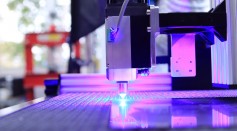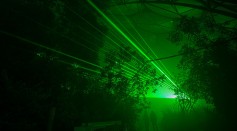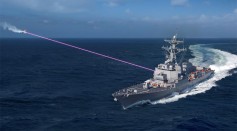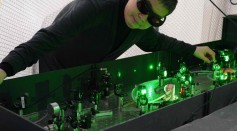Lasers
21 Lasers Discovered: Self-Driving Labs Powered by AI Revolutionize Organic Solid-State Laser
Virtual Biopsy Allows Non-invasive Skin Analysis Using Lasers, Creates High-Resolution Reconstruction of Tissue Samples
NASA Beams Laser Between Orbiter and India's Vikram Lunar Lander, Enabling Precision Targeting on the Moon

How Lasers Work: Exploring the Fascinating World of Precision Light Wave Control

Quantum Breakthrough: Physicists Successfully Manipulate Photons For the First Time

Unusual Green Lights Floated Across Hawaii's Night Sky: What Caused These Bizarre Glowing Lasers?

US Navy Completes Historic Demonstration of New Tactical Laser-Based Weapon System, Works Against Missiles and Drones

Revolutionary Technology Will Use Lasers to Beam Power to Low Earth Orbit Satellites During Eclipses
Generating Antimatter by High-Intensity Lasers Possible by Producing Plasma-Level Energy Similar to Neutron Star
NASA Space Lasers Maps Surface Changes in Amery Ice Shelf
Laser-Cooled Antimatter Seen to Challenge Modern Physics Theories

Researchers Manipulate Antimatter With Laser for the First Time

Accelerometers Based on Lasers Unveiled By NIST
Too Small, Too Cool: NIST Scientists Miniaturize Laser Cooling
Most Popular

Innovative BLAST Patch Could Stop Skin Infections with Harmless Electric Currents

Cold, Not Heat, Caused Mass Extinction 201.6 Million Years Ago: New Study

The Pompa Program: A New Model in Thyroid Wellness

Why It's So Difficult to Lose Weight: The Biological Explanation Behind Obesity






